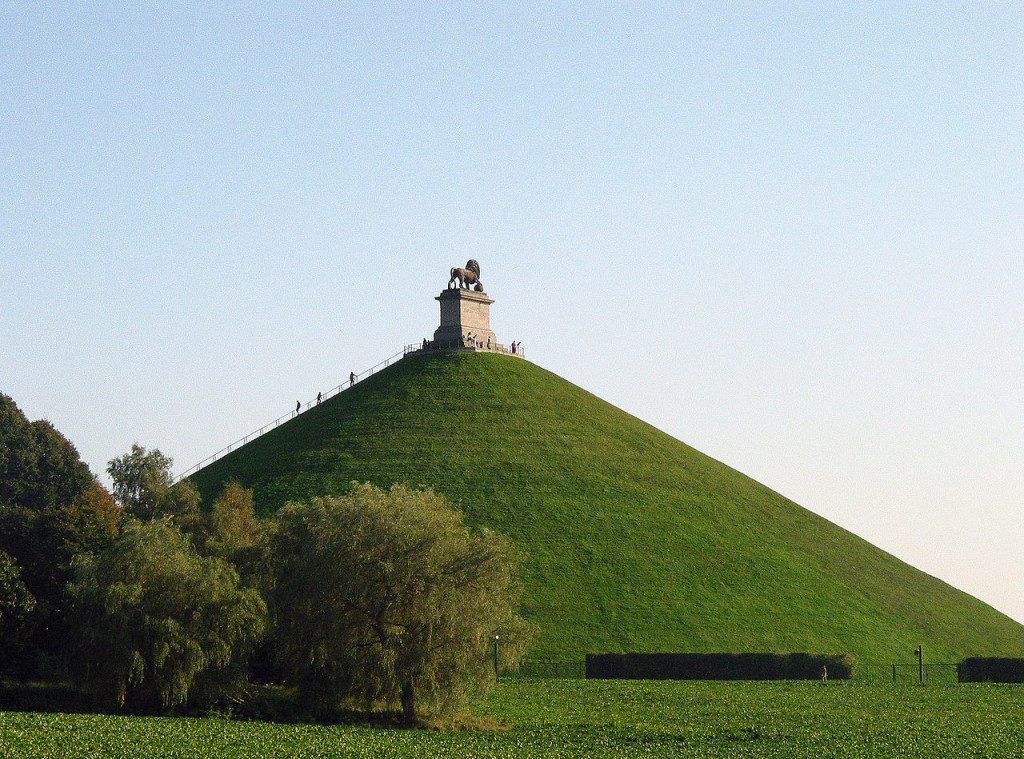The Lion’s Mound is a big conical and artificial hill located in Braine-l’Alleud, Belgium. Therefore a lion statue at the peak memorializes the location on the battlefield of Waterloo where a musket ball struck William II of the Netherlands (the Prince of Orange) in the shoulder. Jean-François Van Geel (1756–1830) sculpted the model lion, which narrowly resembles the 16th-century Medici lions.
It is also a memorial of the Battle of Quatre Bras, which had been fought two days earlier, on 16 June 1815. The mount is 141 feet in height and has a circumference of 1706 feet. Its volume is greater than 514,000 yd3, which far exceeds the frequent claim of 300,000 m3. These days, the surrounding area is used to cultivate beets.
The hill gives a vista of the battlefield and is the anchor point of the associated museums and taverns in the surrounding Lion’s Hamlet. Visitors who pay a fee may climb up the Mound’s 226 steps, which lead to the statue and its surrounding overlook where there are maps documenting the battle, along with observation telescopes.
The statue lion standing upon a stone-block pedestal surmounts the hill. The lion is the heraldic beast on the personal coat of arms of the monarch of The Netherlands and symbolizes courage. At the behest of William I, the Royal Architect Charles Vander Straeten designed the monument. The engineer Jean-Baptiste Vifquain considered it as a symbol of the Allied victory, rather than as venerating any sole individual.
The Lion’s Mound shape is that of a tumulus of the Belgae, whom Julius Caesar called the bravest of the Gallic tribes. The conic hill and its lion have become an icon of Waterloo, and these days they appear on the municipality’s coat of arms. Moreover, earth from various parts of the battlefield, including the fields between “La Haye Sainte” farm and the Duke of Wellington’s sunken lane, is in the huge man-made hill.
Ictor Hugo, in his novel “Les Miserables”, wrote that the Duke of Wellington visited the site two years after the Mound’s completion and said, they’ve altered my field of battle! The alleged remark by Wellington as described by Hugo was never documented, however. There is a legend that the foundry melted down brass from cannons that the French had left on the battlefield, in order to cast the metal lion. In fact, the foundry made nine separate partial casts in iron and amassed those components into one statue at the monument site.

















